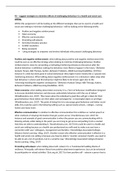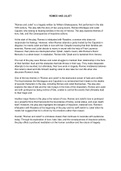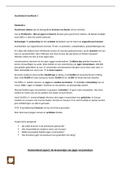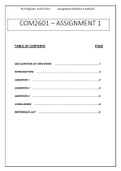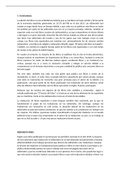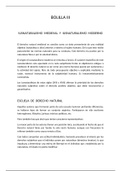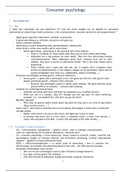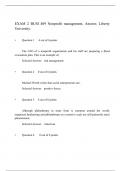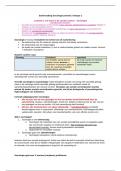P3 – suggest strategies to minimise effects of challenging behaviour In a health and social care
setting.
Within this assignment I will be looking at the different strategies that can be used in a health and
social care setting to minimise challenging behaviour. I will be looking at the following briefly:
Positive and negative reinforcement
Token economy
Effective communication
Promoting self-esteem
Anit-discriminatory practice
Conflict resolution
Being consistent
Using strategies to empower and involve individuals who present challenging behaviour
Positive and negative reinforcement: when talking about positive and negative reinforcement this
could be seen as an effective strategy when looking to minimise challenging behaviour. Positive
reinforcement is done by ‘presenting a motivating/reinforcing stimulus to the person after the
desired behaviour is exhibited, making the behaviour more likely to happen in the future.’ (Behavior
Analysts Tampa: ABA Therapy, Autism, Behavior Problems, ADHD/Learning Disabilities, 2017)For
instance if a child has done good in school (behaviour) they might receive money like a 5 pound note
(reinforcing stimulus). When talking about negative reinforcement it is a stimulus is taken away after
bad behaviour is shown and this behaviour might be likely to be shown again due to the
‘removing/avoiding the negative consequence.’ (Behavior Analysts Tampa: ABA Therapy, Autism,
Behavior Problems, ADHD/Learning Disabilities, 2017).
Token economy: when talking about token economy it is a ‘form of behaviour modification designed
to increase desirable behaviour and decrease undesirable behaviour with the use of tokens’
(Minddisorders.com, 2017). This means when the individual is good they will get a token for their
good behaviour these tokens are then taken and exchanged for ‘a meaningful object or privilege.’
(Minddisorders.com, 2017). The point of doing this is to encourage good behaviour and better social
skills, this could be used in the following setting such as; special needs schools , colleges , nursing
homes and many more.
Effective communication: In relation to effective communication this is defines as ‘verbal speech or
other methods of relaying information that get a point across’ (Yourdictionary.com, 2017) for
instance and example of good communication is when the person you are communicating with is
listening actively while taking in the point you are trying to get across and putting it into a context
that they are able to understanding it. (Yourdictionary.com, 2017) this could be used in a health and
social care setting because as a health care professional you will need to make sure you have a
connection with your ‘colleagues, management and families.’ (Stonebridge Associated Colleges
Distance Home Learning | Blog, 2017). Another reason why effective communication is effective in a
health and social care setting is because you have be able to ‘monitor someone’s health, you need to
be able to ask a lot of questions, but in a sensitive way.’ (Stonebridge Associated Colleges Distance
Home Learning | Blog, 2017)
Promoting self-esteem: when talking about self- esteem it is a ‘fundamental building blocks of
resilience. Principally, self-esteem flows from positive attachment experiences, but can be enhanced
by participation in valued activities’ (Scie.org.uk, 2017) to have positive self – esteem a person has to

